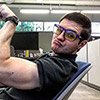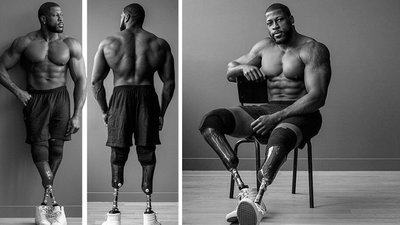One fateful evening, when Edgard John Augustin was 4 years old, his mother lost control of the car while driving on the highway. "I remember waking up to my mother's horrified screams," he recalls. "There was blood everywhere, and, from the knees down, both of my legs were gone. My older brother, who was sitting next to me in the backseat, was also missing one of his legs." The injuries were caused by a piece of railing boring through the rear window.
By the time they were taken to the hospital, both boys had lost a lot of blood. "We're really lucky to have made it out alive," continues Edgard, now 30. "And while our mother only suffered a few broken fingers, the accident has had the longest-lasting impact on her. To this day, she feels like it's her fault that both of her sons are handicapped. It weighs heavily on her soul."
Myprotein Stories: Edgard John Augustin
Watch The Video: 1:42
Starting Over
Shortly after being released from the hospital, Edgard was flown to a facility in Paris specializing in rehabilitating war veterans and other amputees. He would spend the next year learning how to walk again and adjusting to his new lifestyle.
"It was a long process that took a lot of patience," he recalls. "At first, I was dependent on a set of parallel bars to help me stand and move around. In time, I was gradually able to walk with crutches, and then with my prostheses alone."
For Edgard, those 12 months were akin to a child learning how to walk for the first time. And while, as an adult, he has adjusted to his prostheses, walking is still not quite the second-nature endeavor it is for others. "The hardest part about walking with prosthetic feet is learning how to manage your balance," he says. "The lack of an ankle and the rotation that normally comes with it can make it tricky to find your equilibrium. I rely a lot on my upper body to make up for the limited balance of my legs. For example, if I don't hold on to something while standing in a train or a bus, there's a good chance I'll fall down."

For Edgard, those 12 months were akin to a child learning how to walk for the first time.
Once he was cleared from the rehabilitation facility, Edgard moved back to his hometown in the South American nation of French Guiana. Growing up, the most difficult thing for him was dealing with all the stares and comments from his peers at school. "The other kids would look at my legs and make fun of me," he recalls. "They called me 'robot legs'. Sometimes it would really get to me."
Fortunately, enduring the accident so early in life made it easier for Edgard to live with it. "Had I received my handicap as a teenager or an adult, I think it would have been much more difficult to cope with," he explains. "At least, in my case, I didn't really know any other way of living, so it didn't take as harsh of a toll, mentally and emotionally. I never suffered from depression or suicidal thoughts, thankfully."
As far as sports are concerned, they were never really Edgard's thing as a child. "I preferred eating to exercising," he chuckles. "You know, the good life." Ironically, in spite of his handicap and lack of interest in athletics, running was his forte. "I always excelled at running in phys ed," he continues. "I was always faster than all the other kids in my class. I'm not sure why, I just was."
The Birth Of Bionic Body
Edgard first discovered the gym after high school in Paris, while he was working toward his BTS, a type of national diploma of higher education in France. "It was a way of blowing off some steam and stress during exam periods," he explains. "I wasn't really driven by the desire of having ripped abs and big biceps like many other guys. Working out was more about just feeling good. I enjoyed the way it made my mind and my body feel."
A few years into his training, Edgard contacted a sports photographer through a mutual friend. Little did he know that this would set him down a new path. "The photographer was looking for a physique athlete to shoot with, and a colleague of mine who knew him suggested I reach out," he recounts. "I contacted him and explained my situation, which gave him the idea to do a motivational shoot revolving around my handicap."
Edgard was reluctant at first, as he preferred to keep his handicap private; in fact, other than his family and close friends, most people were unaware of it, as he always wore pants or clothing that covered his prostheses. But after some thought, he decided to go through with the shoot.
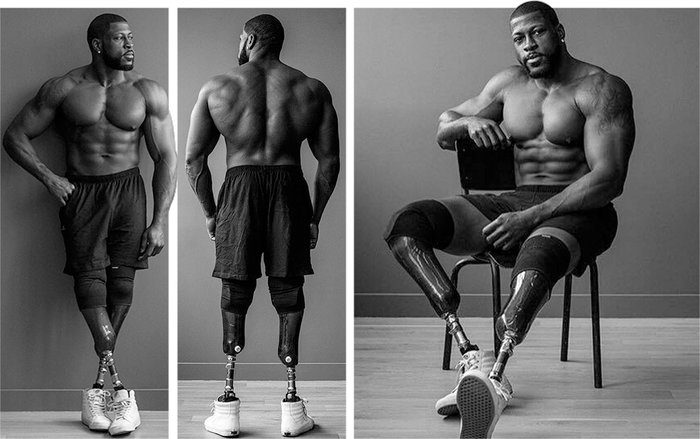
"People told me I should embrace my handicap and show it without fear or embarrassment. It was truly incredible."
"We shot photos of me in a variety of sprinting positions, wearing tight shorts that hugged my thighs but left my prosthetic lower legs completely naked," he says. "The photographer then posted and tagged me in a few of the photos on Facebook, and the comments I subsequently received absolutely blew me away. The photos were met with so much positivity and encouragement. People told me I should embrace my handicap and show it without fear or embarrassment. It was truly incredible."
The overwhelming kindness of the Facebook comments instantly flipped a switch inside Edgard. From that moment on, he decided that he would no longer try to hide his legs. Instead, he would use them as a source of motivation and inspiration to help others who might be struggling.
"I came up with 'Bionic Body' as an edgy and catchy name to create a sort of motivational brand around," he explains. "I registered all the social media accounts for it and started posting highlights of my life and my workouts, with my prostheses always on display."
The Rise Of A Champion
Today, Bionic Body has grown into something far bigger than Edgard ever initially imagined. His Facebook page has more than 20,000 likes, and his Instagram profile boasts more than 65,000 followers. He inspires and motivates thousands of people daily. He frequently receives emails and messages from people telling him that seeing him succeed in spite of his handicap has put things in perspective for them, and given them the mental fortitude to push through their own obstacles and difficulties.
Bionic Body has also opened up many new doors for Edgard: the 30-year-old bodybuilder is both a sponsored Myprotein athlete and an ambassador for Ossur, an Icelandic company specializing in noninvasive orthopedic equipment and prosthetics.
"Right around the time I relocated to Paris after I earned my BTS, my prostheses broke," he recalls. "They were old models that I had been carrying since my younger days, and they restricted me in the gym. This turned out to be a godsend, as I ended up going to a specialist who equipped me with some awesome prostheses, allowing me to safely load and work my legs in the gym.
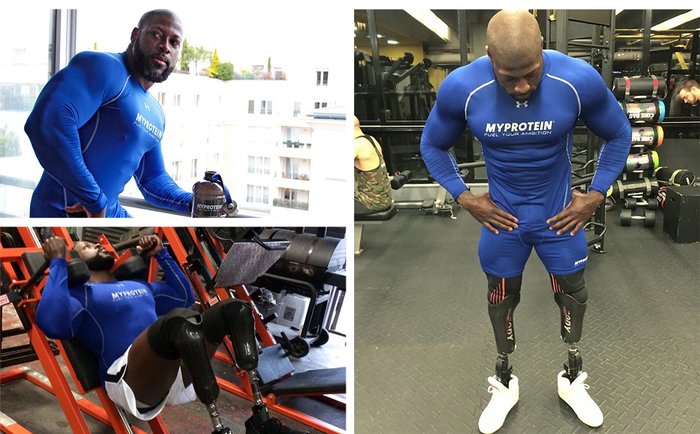
"With my prostheses, I am able to perform a variety of leg work," he explains. "I love doing leg presses, hack squats, leg extensions, and leg curls, as I am able to safely control the weight on those exercises. Barbell squats and deadlifts can also be executed, though I tend to go lighter with these movements, since balance can become an issue if I go too heavy."
In September 2014, upon the urging of friends and colleagues, Edgard hired a coach to prepare for his first competition. "To be honest, I had never considered competing," he admits. "It just wasn't something I thought I had in me, or that I had potential for. But since a lot of people I knew had been encouraging me to compete, I decided to try my hand at it."
And so Edgard competed at the Grand Prix Des Pyrénées in April 2015. Wheelchair bodybuilding isn't very widespread in France yet, with only the biggest contest in the country hosting a division for it. However, that didn't stop Edgard; he wrote to the director of the Grand Prix Des Pyrénées, who arranged for him to be able to stand and pose alongside regular competitors, even though he wouldn't be judged.
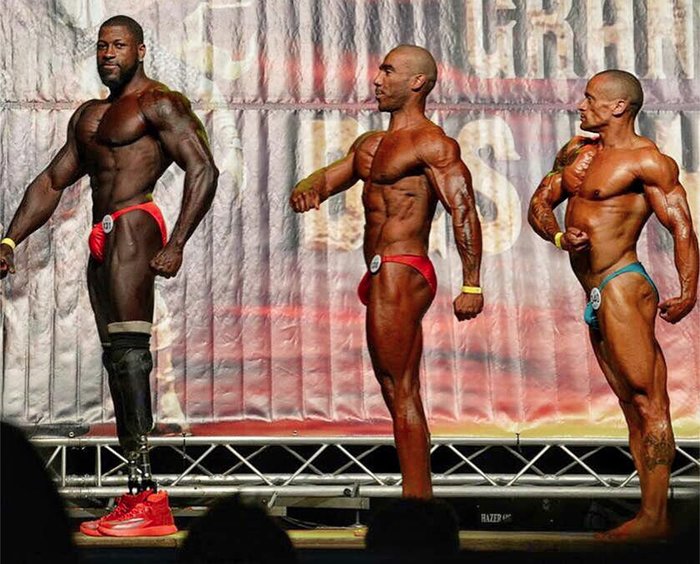
"The opportunity to walk onstage among nonhandicapped athletes was the most beautiful experience ever. It was priceless."
"I'm a bit of an odd case in that, on paper, I belong to the wheelchair division of the sport, but in actuality, I am fortunate enough to be capable of standing up and performing all the regular mandatory poses that you have in the regular divisions," he recalls. "To me, the opportunity to walk onstage among nonhandicapped athletes was the most beautiful experience ever. It was priceless."
After the show, the head coach for the French national team asked him to compete in the European Championships, in Spain, to be held three weeks later. Edgard obliged, and in May 2015, he was crowned the European IFBB Wheelchair Bodybuilding Champion.
The Sky Is The Limit
Today, Edgard is a man with a renewed vision. He has two competitions lined up back-to-back in late March and early April of this year. He is also eyeing the World Championships in November, where he hopes to become the undisputed IFBB Wheelchair Bodybuilding World Champion.
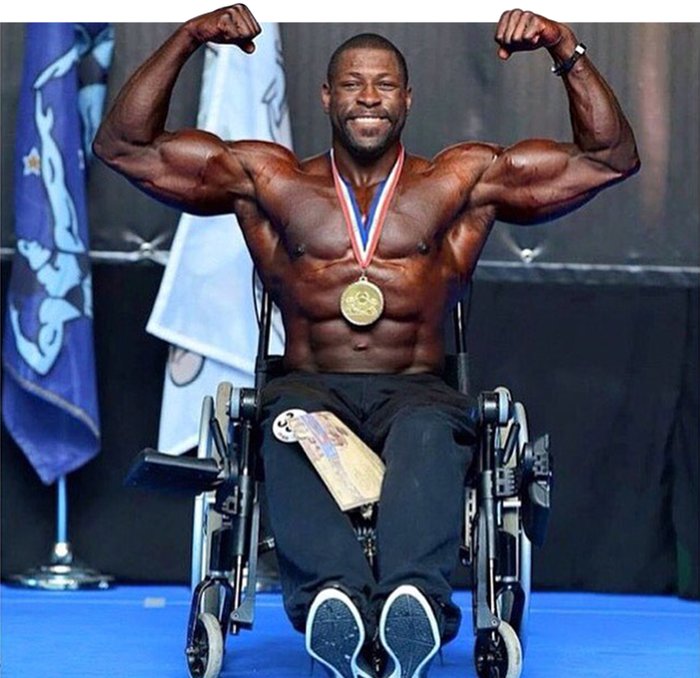
In May 2015, Edgard was crowned the European IFBB Wheelchair Bodybuilding Champion.
"Bodybuilding is more than just a passion for me," he explains. "It's a lifestyle. It's who I am, and it's what I want to do with my life. I want to keep growing Bionic Body, and to help and motivate as many people as I can. I want to become the greatest champion the sport has ever seen."
Stories like Edgard's are inspirational, and they are a good reminder that where there is a will, there is a way. As Edgard often likes to say, "The sky is the limit."
